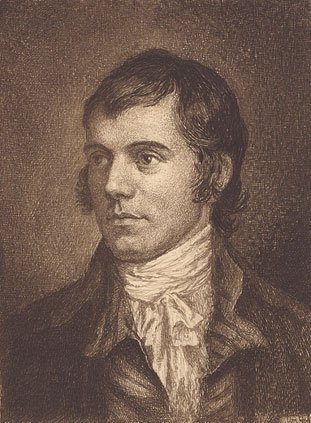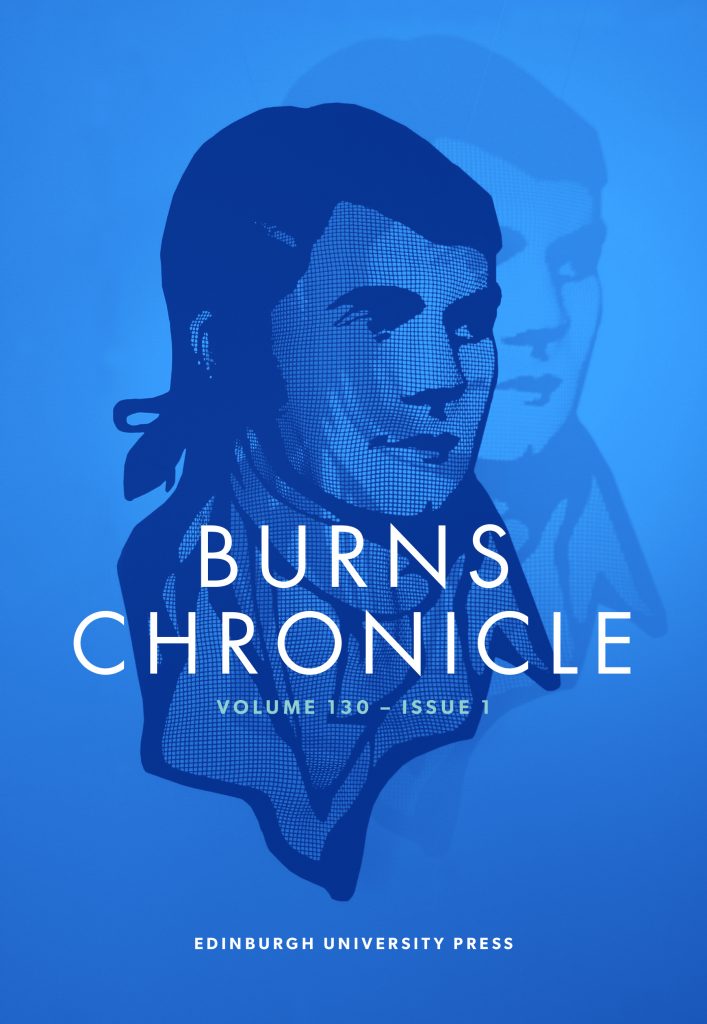
By the Editors & Reviews Editor, the Burns Chronicle
Almost 130 years ago, in 1892, enthusiasts started publishing the Burns Chronicle and the journal has continued ever since, conveying articles of interest and news among Burns Clubs and admirers of the Poet worldwide. It is arguably the oldest Scottish Literature journal in the world.
In its first 129 years, edited by volunteer amateurs, the Burns Chronicle carried articles by leading Burns aficionados and scholars in the field and now its station as a prime resort for quality studies about Robert Burns is established in its move to Edinburgh University Press. An academic advisory board made up of scholars from four continents and a dedicated reviews editor with full peer-review has added a new dimension to the Chronicle. It remains, however, in its historic function as a journal for the wide network of Burns Clubs and lovers of Burns across the world.

Let’s pick an issue at random off the shelf (and the back issues are increasingly available in online, digital format): the one for 1898. Here we find articles on the ‘Earnock’ manuscripts, important in the assessment of the first full edition and biography of Burns by James Currie in 1800, on the poet’s love-life (both Jean Armour and ‘Highland Mary’), on the old Scots plough, on Burns’s ancestral homeland in the North East of Scotland, on physical Burns ‘heritage’ – Mauchline kirkyard and Burns’s home and farm at Ellisland in Dumfriesshire. All such perennial interests are to be found in the recent Chronicle 130:1 (spring issue), the first of the new two a year format in 2021. The work, the biography, the surrounding culture and the ‘afterlife’ of Robert Burns remain of huge interest to a wide community of enthusiasts, a group which would include scholars, curators, archivists, and many others involved in one way or another with the cultural history of Scotland and the modern western world.

A principal motivation of the creation of the Burns Federation in 1885 was the dawning realisation that Burns was, often quite peerlessly, a ‘World Writer’. The Chronicle was part of that international identification commitment and remains so today. The Federation includes under its umbrella the wonderful Robert Burns Association for North America (RBANA) which meets regularly, alternating between USA and Canada, and has members on five continents. It would be nice to obtain an advisory board member for the journal in South America and we are working on it!
The Burns Chronicle 130:1 contains articles on Burns in France, in England even (where Burns is increasingly taught in universities), in the work of Glasgow publishers, in the writer’s relation to Gaelic song, in the universal world of advertising, on the site at Ellisland (how 1898!), on manuscripts, on Burns’s first collection – the ‘Kilmarnock’ edition of 1786 – and on attribution of texts. It is not that we go round in circles with Robert Burns, but that if anything we know more all the time about the life and work. And if knowledge is (quite rightly to a large extent) seen as something that is revisited and reinterpreted in every age, we have to repeat questions we have asked before for the new answers that are often our response to these. Robert Burns, the world writer is worth studying across a whole range of enquiries, as much now as in 1892 and that is why he is the central subject of one of the oldest journals in Scottish Studies.
The Burns Chronicle is a dedicated platform for the rich, international research on Robert Burns (1759-96) which is happening in the 21st century. Find out how to subscribe, or recommend to your library.






